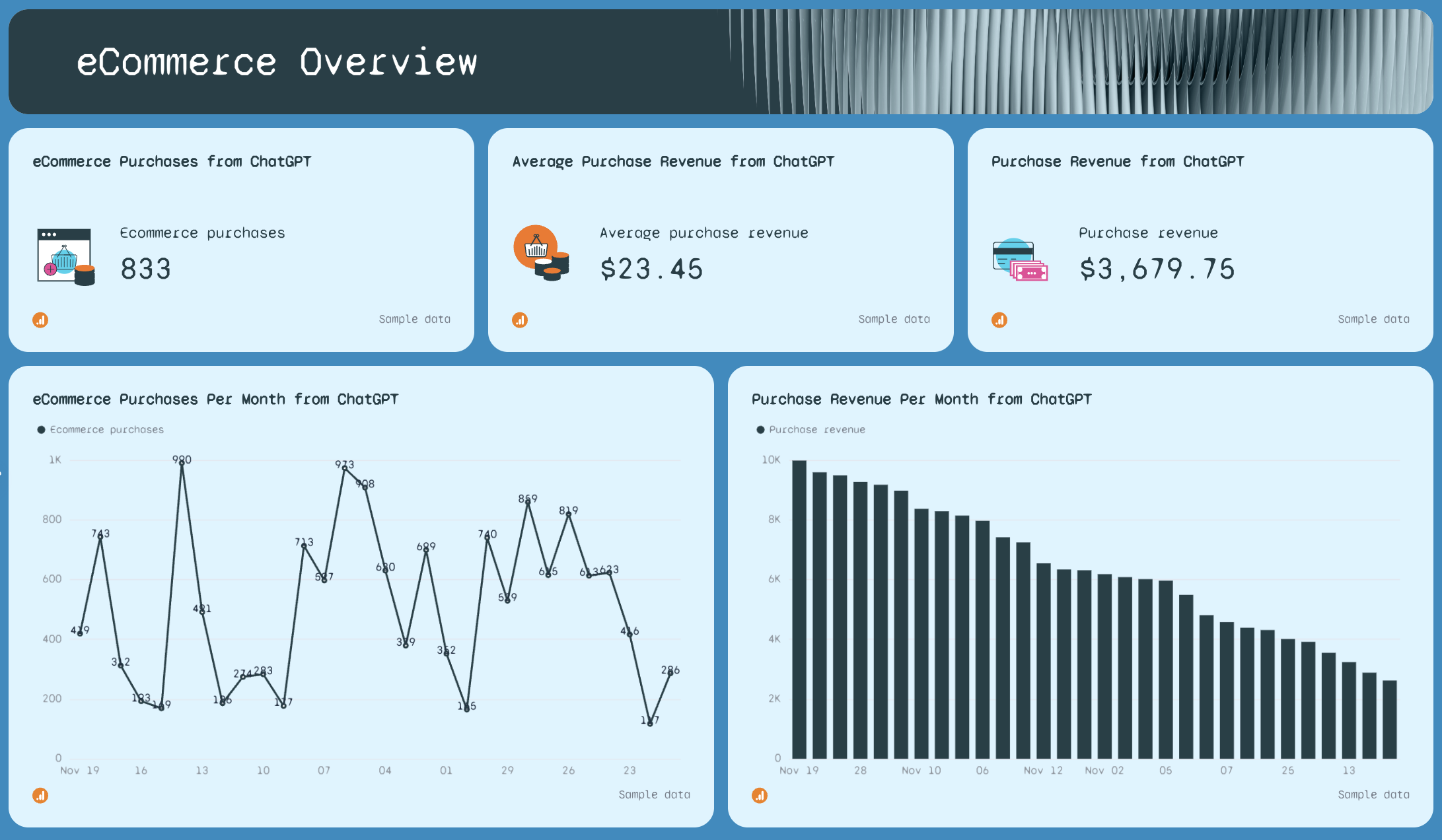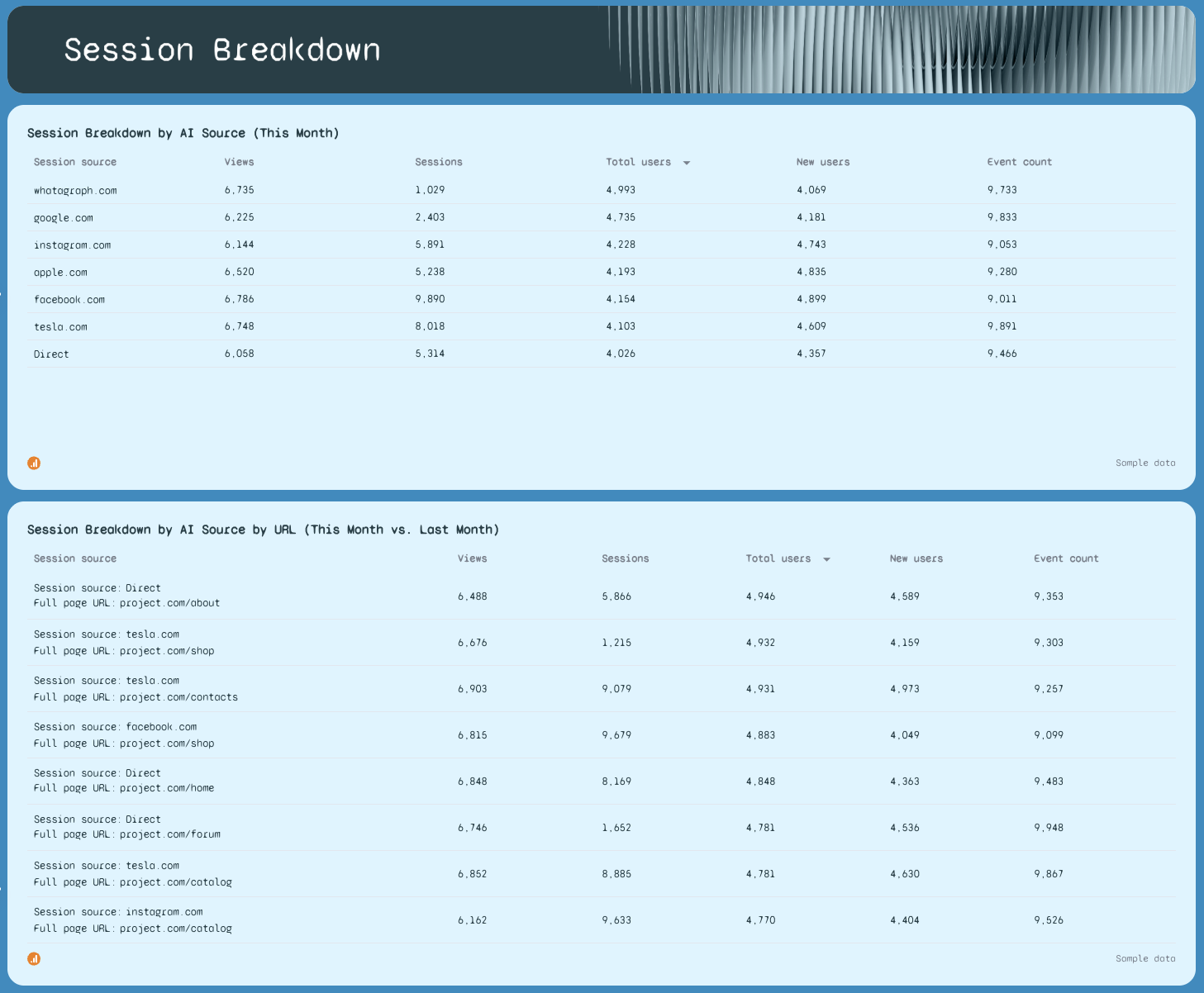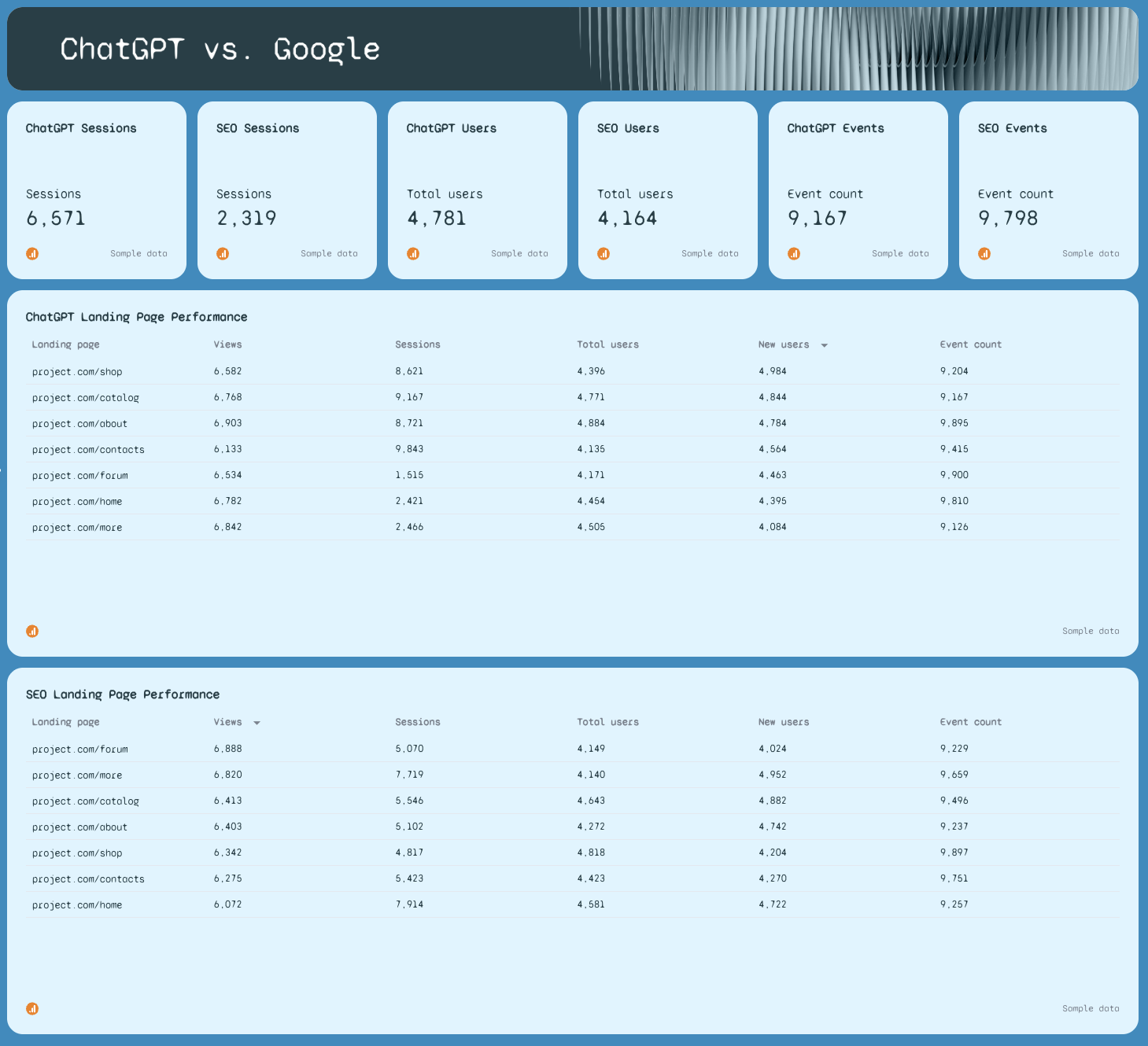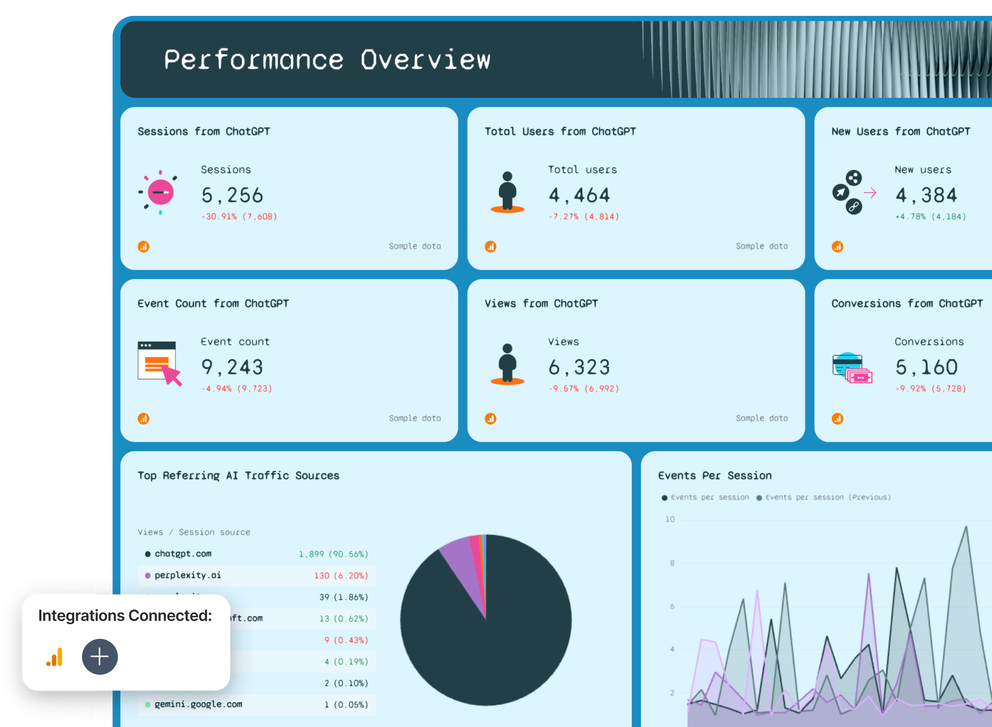What To Include in a ChatGPT Monthly Marketing Report
A ChatGPT monthly marketing report gives your team a full view of how ChatGPT impacts your website traffic, conversions, and growth over an entire month.
This template is built for marketers, SEO teams, and stakeholders who want clean data visualization, reliable metrics, and organized insights without sorting through datasets, spreadsheets, Microsoft files, or manual data analysis.
1. Performance Summary

Start your monthly report with a simple overview of the month’s key metrics. This gives teams an instant executive summary and helps streamline monthly decision-making.
Include:
- A monthly performance summary widget showing your main KPIs for the month, such as sessions, views, total users, new users, event count, and conversions. These key metrics are pulled straight from your dashboard so you don’t need to export anything to Excel or Google Sheets.
- A goal widget that tracks monthly progress toward your targets. This makes it easy to see if your team’s performance is improving or slipping month to month.
- A summary and recommendation text box powered by Whatagraph IQ.
IQ lets you automate your writing and generate summaries in five formats: Summary, Wins, Issues, recommendations, or custom prompt. Because it uses your actual datasets from the platform, there are no hallucinations and no sharing of data with outside ai tools, keeping everything secure. IQ also works in 18 languages, which helps when your report is shared across several teams.
This section gives your whole workflow a strong foundation and keeps everyone aligned on the top takeaways for the month.
2. Performance Overview

This part of the template breaks down how much traffic ChatGPT brought to your website throughout the month.
Include:
- Single-value widgets for sessions, total users, new users, views, event count, and conversions.
- These metrics come from Google Analytics 4, but the report uses a custom filter where Source / Medium → matches regex → chatgpt / openai, so you only see traffic that truly came from ChatGPT or similar AI sources like Copilot.
- A pie chart showing your top referring AI traffic sources for the month. This helps you compare ChatGPT to others, such as Perplexity or Gemini.
- A set of graphs showing trends for sessions per month, events per session, and views per month. These visuals make your performance report easy to share with stakeholders and reduce the need for step-by-step explanations.
This entire section helps your team quickly understand how using ChatGPT as a traffic source affects long-term website traffic and activity.
3. eCommerce Overview

If you run an ecommerce business, this is where you can see how ChatGPT traffic impacts your sales.
Include:
- Widgets for ecommerce purchases, total revenue from ChatGPT, and average purchase value.
- A monthly line graph that shows ecommerce purchases coming directly from ChatGPT.
- A monthly bar graph that shows total sales from ChatGPT traffic.
These visuals show exactly how well ChatGPT converts compared to your other channels, so you can improve conversion rates and update your methodology as needed.
4. Session Breakdown by AI Source (This Month)

Here, you can see the specific channels sending traffic to your site and which URLs those channels support.
Include:
- A table showing sessions from each AI source for the month.
- A detailed table showing sessions from each source broken down by URL, giving you insight into performance by landing page.
This is helpful for data analysis and identifying use cases where ChatGPT performs well—or where optimization is needed.
5. ChatGPT vs. Google

End your monthly report with a clear comparison between ChatGPT and traditional SEO traffic from Google. This helps you understand whether ChatGPT is supplementing or outperforming organic traffic.
Include side-by-side numbers for:
- Sessions
- Views
- Total users
- New users
- Event counts
This comparison helps your team understand where to streamline content, where to focus brainstorming for next month, and what takeaways matter most for future status reports.



















